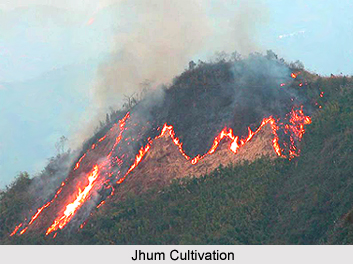 Economy of North Cachar Hills District is not very encouraging. Geographical remoteness, poor communication and lack of proper infrastructural facilities are some of the main factors behind the low level of economic development of this district of Assam. However, in spite of the depressing scenario, prospects of agriculture, horticulture and forestry forming the main sectors of economy of North Cachar Hills District are bright.
Economy of North Cachar Hills District is not very encouraging. Geographical remoteness, poor communication and lack of proper infrastructural facilities are some of the main factors behind the low level of economic development of this district of Assam. However, in spite of the depressing scenario, prospects of agriculture, horticulture and forestry forming the main sectors of economy of North Cachar Hills District are bright.
Agriculture contributes heavily to the economy of North Cachar Hills District. Majority of the rural people of the district is dependent upon agriculture. A distinctive feature of the agricultural practices of the tribal people in the district is jhum cultivation, which is the traditional way of their life. This shifting process of cultivation is very popular among the people of this district. Near about 70 per cent of the total cultivated area is under jhum cultivation area. This cultivation is done in autumn season either as a single crop or sometimes as mixed crop along with maize, ginger, turmeric, chillies and other vegetables. Some horticultural crops cultivation, such as pineapple, orange, papaya and banana occupy a vital role in the agricultural economy of the district.
Winter paddy cultivation in flat lands mostly in river valleys is done only in Rabi season. Constant efforts have been made by the Departments of Agriculture, Soil conservation and Irrigation to boost up the agricultural economy. Jhum cultivation has many drawbacks. It turns the hill slopes barren by soil erosion and it is less productive. Some private sector as well as some public sector undertaking has started coffee and rubber cultivation in different localities of North Cachar Hills District. Further, several agro-based industries have been established in the region for enhancing its economy.
Economy of North Cachar Hills District also includes sectors like livestock and poultry. They occupy an important place in the rural economy. Buffalo, pig, etc. are the most common livestock animals while hen and duck comprise the poultry birds. The major forest products consist of timber, cane, bamboo, etc. Boulders and gravels in the riverbeds along with stones are also available. The major industries constituting the economy of North Cachar Hills District include cement factories; saw-mills, etc. These are basically private sector industries of the district. There are four cement plants in this district. Apart from these, weaving is also considered to be a popular household industry in this district. Limestone and coal in small quantity are found in the region. Good quality of limestone, low in magnesia and suitable for cement manufacturing is available in the district.
Thus, it can be said that economy of North Cachar Hills District is mainly agrarian in character.



















